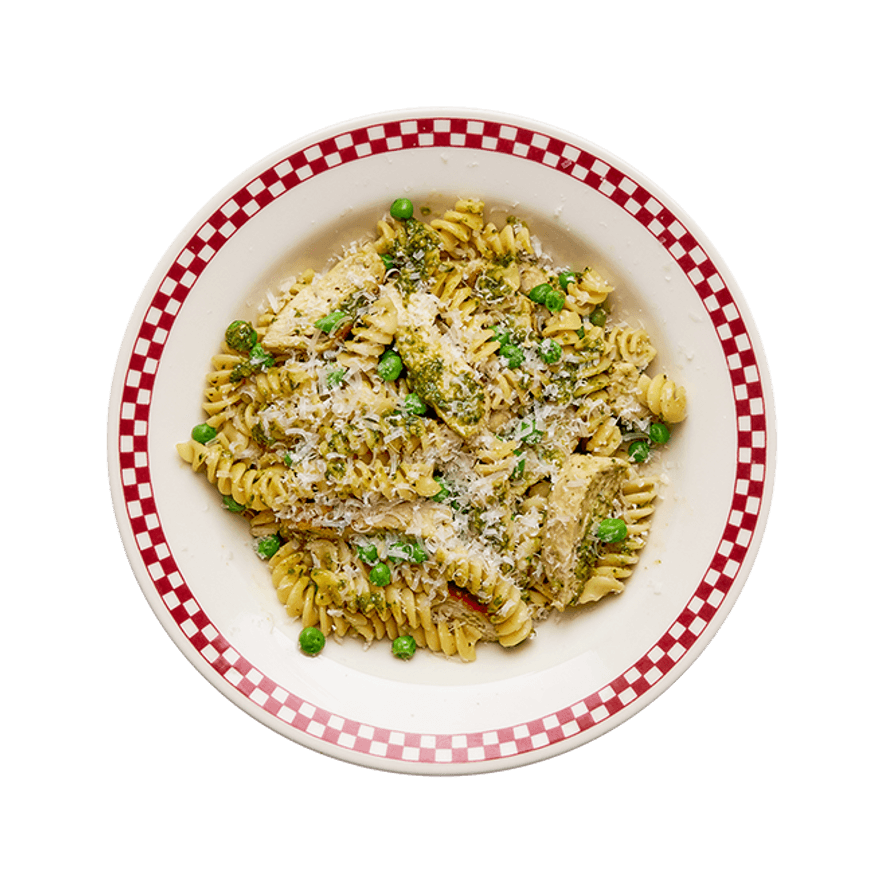Ingredients
Make sure you have...
Utensils
Frying pan, Stovetop, Pot (small)
recipe

Step 1
Halve the chicken breast lengthwise.
Step 2
Heat a drizzle of oil on a pan over medium-high heat. Add the chicken. Season with salt & pepper. Sear undisturbed, 2-3 minutes on each side, until fully cooked. Set aside.

Step 3
In a pot of salted, boiling water, cook the pasta according to package instructions. Strain the pasta.
Step 4
In the meantime, slice the chicken.


Step 5
Add the pasta to the same pan over low heat. Add the pesto & parmesan cheese. Mix it all together.

Step 6
Add in the sliced chicken. Mix it all together. Add the peas, stir & cook 2 more minutes.
Step 7
Serve hot, topped with more parmesan cheese. Enjoy!

Try making pesto from scratch ! Search "Homemade Pesto” in the app to learn how !
- Domitille, Food Editor
Personal notes
Add your own flavor!
Nutrition facts
Average estimated amount for one serving
| Energy | 666 cal. |
| Fat | 16 g |
| Carbohydrates | 72 g |
| Protein | 53 g |
| Fiber | 7 g |
Values are based on an average estimate for one serving. All nutrition information presented on Jow is intended for informational purposes only. If you have any concerns or questions about your health, please consult with a health-care professional.
On average, one serving of the recipe "Chicken Pesto Pasta" contains 666 Energy, 16 g of Fat, 72 g of Carbohydrates, 53 g of Protein, 7 g of Fiber.
Price per portion
| € | Nos recettes à -2 € par portion |
| €€ | Nos recettes entre 2 € et 4 € par portion |
| €€€ | Nos recettes à +4 € par portion |
Please note, the price above is dependent on your grocer and the available products in the grocery store you chose.
Scores


A Nutri-score
The Nutri-score is an indicator intended for understanding nutritional information. Recipes or products are classified from A to E according to their food composition to promote (fiber, proteins, fruits, vegetables, legumes, etc.) and foods to limit (energy, saturated fatty acids, sugars, salt, etc.).
C Green-score
The Green-score is an indicator representing the environmental impact of food products. The recipes or products are classified from A+ to F. It takes into account several factors on the pollution of air, water, oceans, soil, as well as the impacts on the biosphere. These impacts are studied throughout the product life cycle.
Retrieving reviews...



